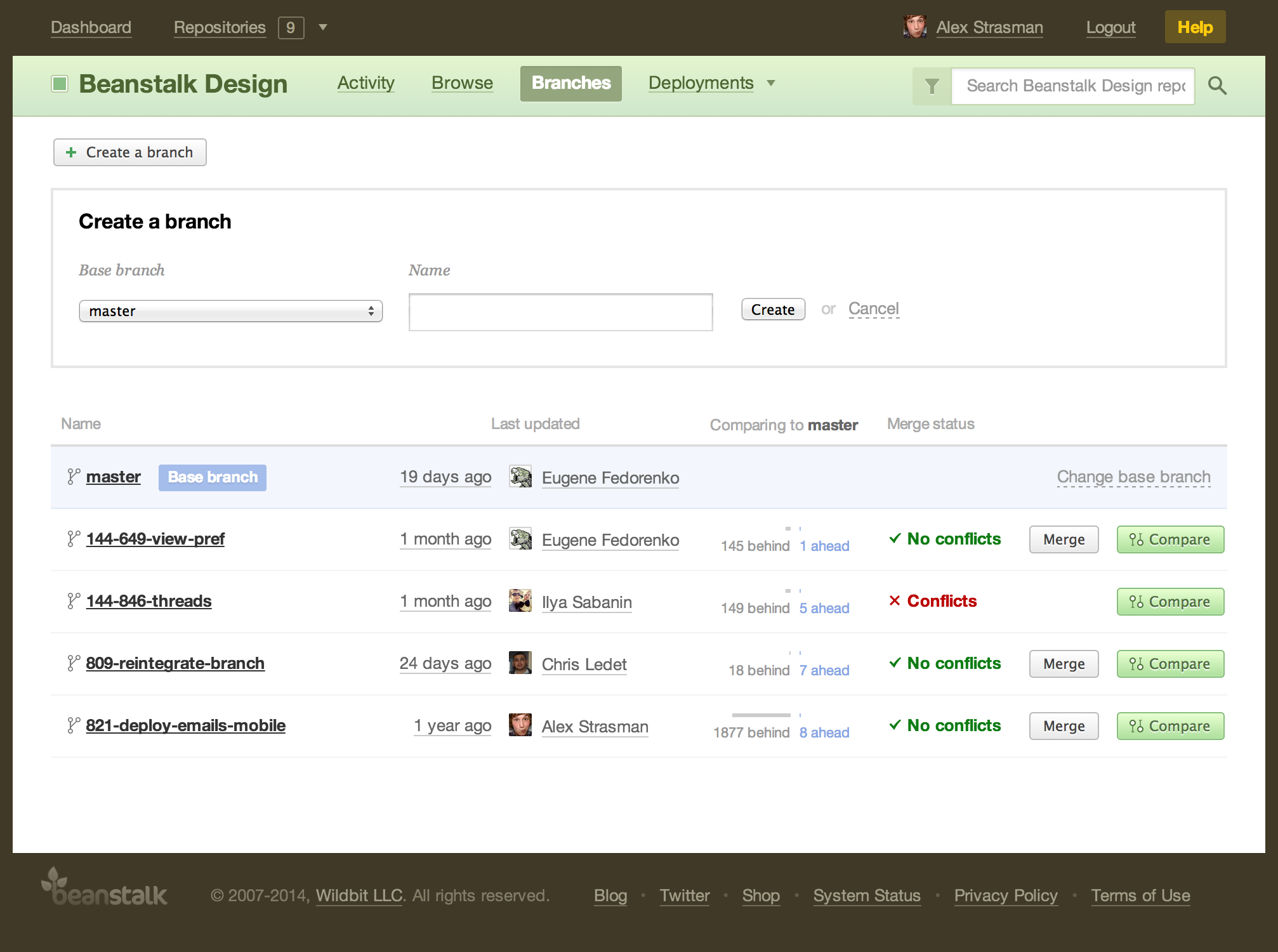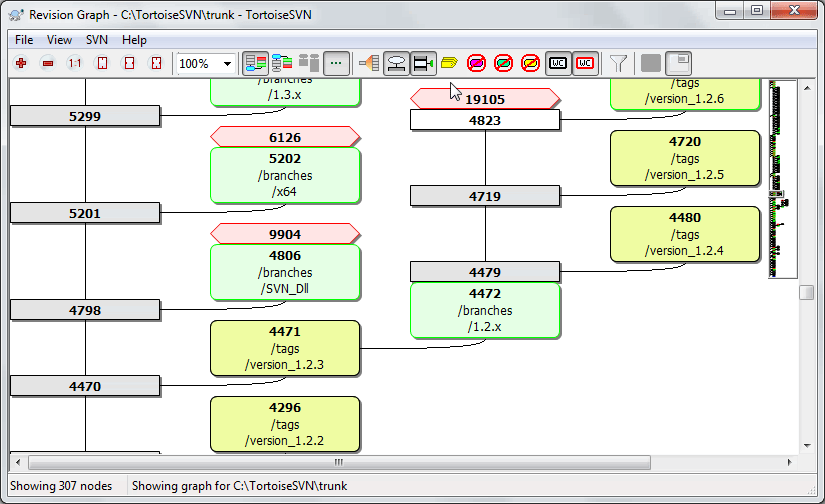

It’s also perfectly fine to create the branch after-the-fact (have you ever started something thinking it would be an hour and 4 hours later realized you were nowhere near done?). When you know you are going to be working on something that you won’t be able to check in quickly, it’s a good idea to start a branch. See my previous post on installing SVN server if you want to get it set up real quick (you can put it on your workstation/laptop just to learn how it works easily enough). I’m going to assume you have Subversion installed along with the nearly ubiquitous client, TortoiseSVN. But what if your changes break the build (on the build server – you do have a build server don’t you?) or would cause problems for others on your team if they get the latest code? The solution with Subversion is branching and merging (incidentally, if you’re using Microsoft Visual Studio Team System, you can shelve your changes and share shelvesets with others, which accomplishes many of the same things as branching and merging, but is a bit simpler to do). By “too much work” I mean typically on the order of a couple of hours at most, and certainly it’s a good practice to check in anything you have before you leave the office for the day. Create a new repository for the project.It’s a good idea not to do too much work without checking something into source control.You would have to do a separate checkout and then merge any differences. If you change the path, step 6 regarding the "relocate" command will not work to re-point existing repository checkouts.If you have such text strings in your file contents that you want preserved, you must tweak the command according to your particular version of sed. Using this command, you are doing a global substitution for all appearances of "Node-path: project_n\/trunk".Sed -i 's/Node-copyfrom-path: project_n\/trunk/Node-copyfrom-path: trunk/g' project_n.dump

Sed -i 's/Node-path: project_n\/trunk/Node-path: trunk/g' project_n.dump This can be done by hand, but it's easier and safer to use a tool such as sed: If you want to move all of the files one level up to be at the root of the repository, you must modify the path in the dump file. If you run an "svn move" command then the new file paths don't retain histories of the old file paths.
#Subversion create new branch code#
However, the history of code commits and comments is very important. An easy way to do this is to simply create a new repository and add the current code base as revision 1. The task was thus to extract each project folder into its own separate repository. Also, since SVN by its very nature keeps a history of all changes made, we didn't want to have to maintain and back up a mega-repository that would continue to grow even after we archived projects. Or, we might want to migrate them to Git. It made more sense to give projects their own repositories so that we could, for example, take advantage of integrated project management systems such as Assembla.


It had a structure similar to the following: /įor various reasons, we needed to move and retire projects. When Mugo first started many years ago, we had one SVN repository for all projects.
#Subversion create new branch how to#
In this article, we will show you how to extract SVN projects to their own repositories, preserving full commit histories. Also, over time, moves and deletions can bloat the size of your repository with obsolete, unused data. Having multiple projects stored in one Subversion repository is a challenge if you want to move one of the projects to another repository.


 0 kommentar(er)
0 kommentar(er)
